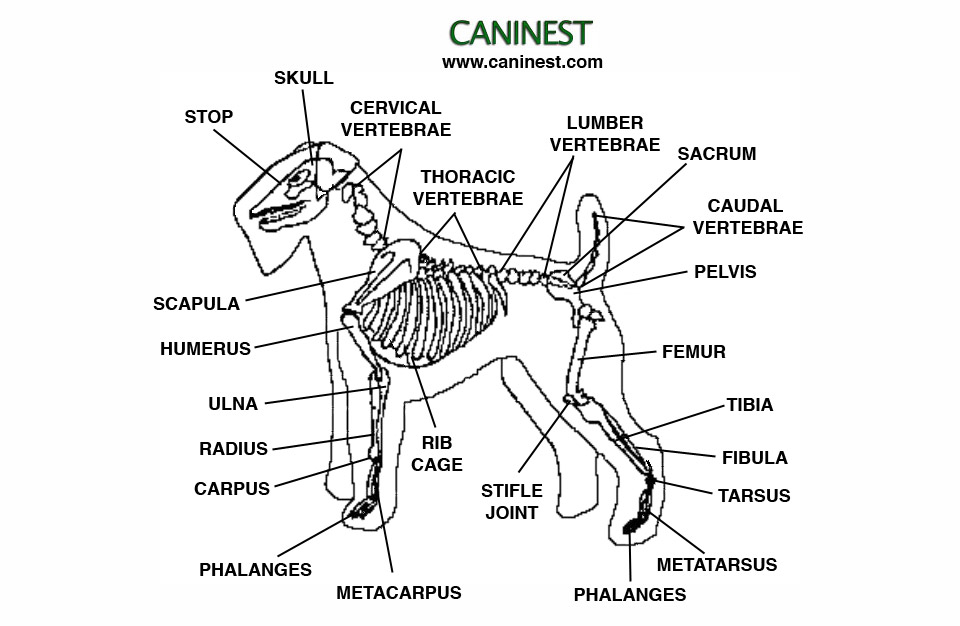
Dog Skeleton Anatomy
All the information on this channel and the resources available are for educational, informational and entertainment purposes only. If you are new to this ch.

Dog skeleton 101 Dog Anatomy Bones Animal Hackers
Tendons attach each end of a muscle to a bone. They are located within sheaths that allow them to move easily. Ligaments are also tough cords formed of connective tissue, but unlike tendons they can stretch to some extent. Ligaments surround joints and help to support and stabilize them. They also connect one bone to another. Stifle joint, dog

Dog Anatomy Dog Skelton
ISSN 2534-5087. This veterinary anatomy module of the dog contains 218 illustrations dedicated to the canine osteology anatomy. Here are presented scientific illustrations of the canine skeleton, with the main dog's bones and its structures displayed from different anatomical standard views (cranial, caudal, lateral, medial, dorsal, palmar..).
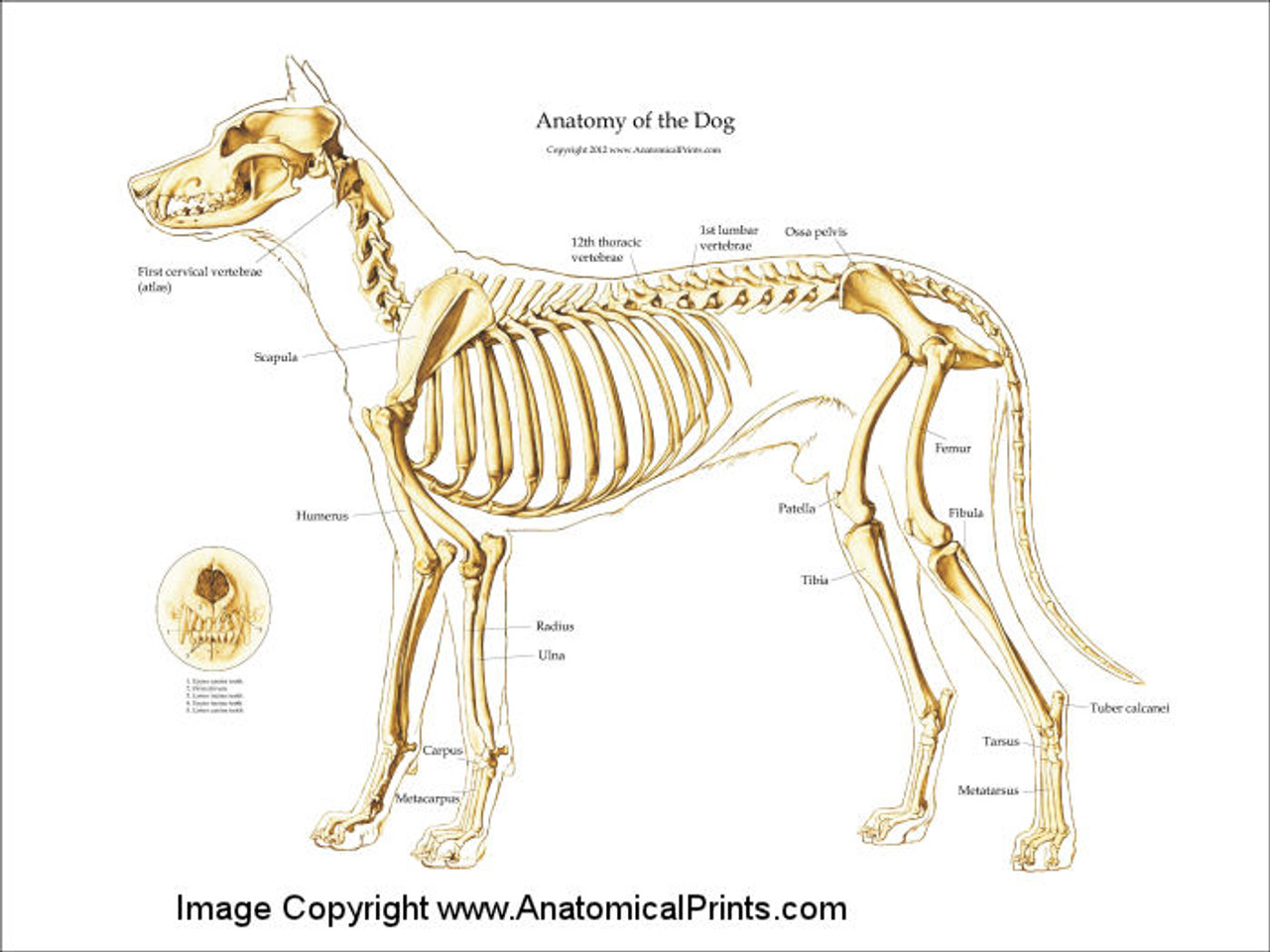
Canine Skeleton Poster Clinical Charts and Supplies
Labeled anatomy of the head and skull of the dog on CT imaging (bones of cranium, brain, face, paranasal sinus, muscles of head) This module of vet-Anatomy presents an atlas of the anatomy of the head of the dog on a CT. Images are available in 3 different planes (transverse, sagittal and dorsal), with two kind of contrast (bone and soft tissues).

Dog skeleton with major bone elements labeled (Davis, 1987, p. 54;... Download Scientific Diagram
Anatomic Planes The main planes of motion for dogs are as follows (see Figure 5-1): • The sagittal plane divides the dog into right and left portions. If this plane were in the midline of the body, this is the median plane or median sagittal plane. • The dorsal plane divides the dog into ventral and dorsal portions.
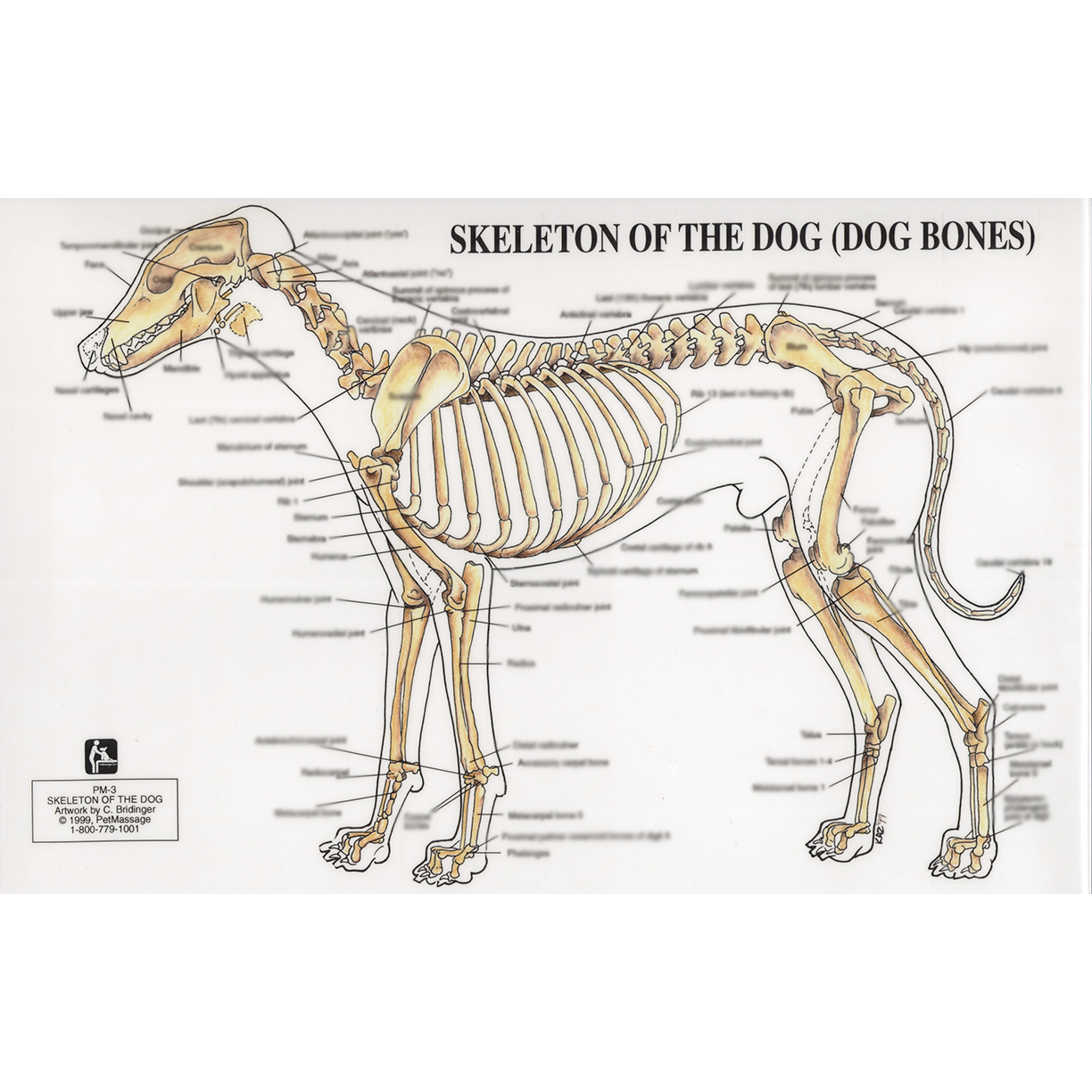
PetMassage™ Chart 3 Skeleton of the Dog · PetMassage™ Training and Research Institute
The cat has a small coronoid fossa medial to the radial fossa that accommodates the coronoid process of the ulna during elbow joint flexion.; The cat has a supracondylar foramen near the medial condyle allowing the passage of the median nerve and brachial blood vessels.; There is an intermediate tubercle between the greater and lesser tubercles in the horse's intertubercular groove.
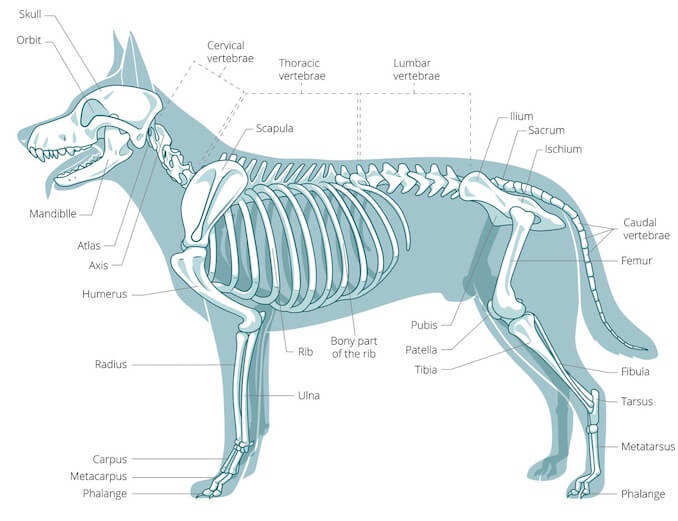
A Visual Guide to Dog Anatomy (Muscle, Organ & Skeletal Drawings) All Things Dogs
Dog anatomy comprises the anatomical studies of the visible parts of the body of a domestic dog.Details of structures vary tremendously from breed to breed, more than in any other animal species, wild or domesticated, as dogs are highly variable in height and weight. The smallest known adult dog was a Yorkshire Terrier that stood only 6.3 cm (2.5 in) at the shoulder, 9.5 cm (3.7 in) in length.

Anatomy of a male dog crosssection, showing the skeleton and internal organs. Colour process
Dog Skeleton Anatomy With the large range of breeds and dog sizes, despite their difference in appearance, it might be surprising to hear dog anatomy is generally the same with regards to physical anatomy and characteristics. Dogs have a skeletal system. However, dogs don't have a collar bone, unlike humans; providing a larger stride for running.
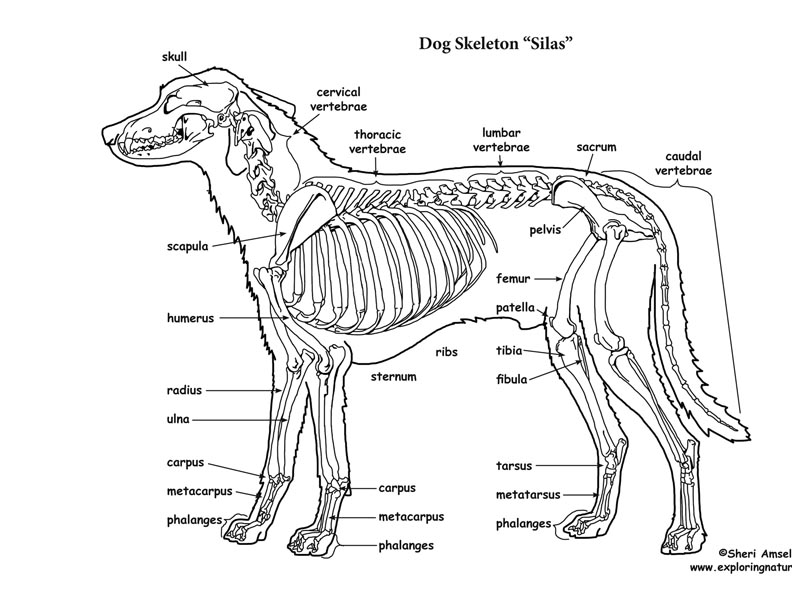
Dog Skeletal Anatomy
The femur, humerus, tibia, fibula, radius, ulna, metacarpals, and metatarsals belong to this category. Femur bone Image / Sunshineconnelly Short bones Short bones are roughly cube-shaped. They provide stability and little bit of movement in the ankle and wrist joints. The carpal, tarsus and vertebrae are bones in this category. Flat bones
Anatomy Of Dog Skeleton With Labeled Inner Bone Scheme Vector Illustration Stock Illustration By
This veterinary anatomical atlas includes selected labeling structures to help student to understand and discover animal anatomy (skeleton, bones, muscles, joints, viscera, respiratory system, cardiovascular system). Positional and directional terms, general terminology and anatomical orientation are also illustrated.

FileDog anatomy lateral skeleton view.jpg
The dog skeleton anatomy consists of bones, cartilages, and ligaments. You will find two different parts of the dog skeleton - axial and appendicular. Here, I will show you all the bones from the axial and appendicular skeleton with their special osteological features. Again, I will provide more labeled diagrams for each dog skeleton bone.

Labeled atlas of anatomy illustrations of the dog Bones Skeletal system Dog skeleton, Dog
The anatomy of a dog includes its skeletal structure, reproductive system, the internal organs, and its external appearance. The following paragraphs explain all these aspects in brief, along with diagrams, which will help you understand them better. External Anatomy Dogs, like all mammals, have eyes, a nose, a forehead, and ears.

Dog skeleton 101 Dog Anatomy Bones Animal Hackers
Organs of dogs Canine anatomy As we explain above, canine anatomy is far ranging due to the diversity of existing breeds. These different breeds not only differ from each other in size, but in the shape of many body parts. Perhaps the most significant is head shape. There are three main different types of head formation in dogs:

Dog Vertebral Column Anatomy ANATOMY STRUCTURE
The dog skeleton is the bony part of dogs made for the support and protection of internal organs. Bones are connected through joints and muscles move the bones to produce the normal dog movements. In this article we will cover: Bone types and parts of the dog skeleton The dog skull Dog cranium The spine The Trunk The Forelimb The Hindlimb

maryrosedog Dog skeleton, Dog anatomy, Dog skull
An overview of the anatomy of the canine skeleton.Follow on twitter @ https://twitter.com/PerkyVetInstagram: Perkydvm

Anatomy Of Dog Skeleton With Labeled Inner Bone Scheme Vector Illustration Stock Illustration
One of the most important parts of a dog's anatomy is their skeleton. A dog's skeleton is made up of many different bones, which provide structure and support for their body. Dogs have over 300 bones in their body, which is more than humans who have around 206 bones. Their skeleton includes their skull, spine, ribcage and limbs.